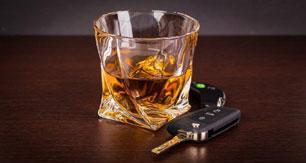Field Sobriety Tests in Illinois: valid Psychophysical Tests or Voodoo Science?
By Donald J. Ramsell
RAMSELL & ASSOCIATES, LLC
DUI Lawyer
MEMBER, AMERICA'S TOP DUI & DWI DEFENSE ATTORNEYS TM
I recently had the opportunity to become certified in standardized field sobriety testing under the National Highway Traffic Safety Administration of Chiefs of Police. The program consisted of three full days of study, including both a practical exam on live subjects, and a written examination.
This brings to the topic of this article - are field sobriety test currently in use in Illinois valid or simply voodoo science? The answer is both, depending on the individual police officer and the "tests" that he or she administers.
Presently, Illinois lacks any standards which police are required to follow when administering so-called Field Sobriety Tests (FST's). Therefore, courts and juries are often misled by officers who use "tests" which lack scientific or medical support, or lack standardization in administration or scoring. An example of these non-validated test includes the alphabet test (say a portion of the alphabet forwards or backwards, slow or fast, singing or non-singing), the finger to nose test, and the shut your eyes and stand perfectly still test (i.e., the Rhomberg test).
Presently there are only three recognized and validated field sobriety tests - The One-Leg Stand, The Walk and Turn Test, and the Horizontal Gaze Nystagmus Test. They are referred to as Standardized Field Sobriety Tests (SFTS's).
Historical Background
Since the 1970's, NHTSA has conducted research that resulted in the development of a battery of three standardized field sobriety tests (horizontal gaze nystagmus, walk-and-turn and the one-leg stand) to assist police officers in detecting impaired drivers. (See "DWI Detection and Standardized Field Sobriety Testing, Instructor's Manual," 1995, HS 178 R10/95, p. B-3, available for purchase at www.ntis.gov).
The first published article on the validity of SFST's was Psychophysical Tests for DWI Arrest, (1977, NHTSA DOT-HS-5-01242). A later study recommended the use of the present three test battery over the inclusion of the finger-to-nose, alphabet test and others. (See "Development and Field Test of Psychophysical Tests for DWI Arrest," 1981, DOT-HS-805-864).
Since 1981, NHTSA's battery of standardized field tests have been used to help determine whether motorists who are suspected of dui have blood alcohol concentrations (BAC's) of 0.10 or above. The creator of these tests, Marcelline Burns, wrote in 1998 that there is no direct correlation between field sobriety tests and impaired driving. (See "Validation of the Standardized Field Sobriety Test Battery at BAC's Below 0.10 Percent" NHTSA 1998.)
In early studies, by the NHTSA, the One Leg Stand Test was found to be 65 percent reliable in detecting impairment, the Walk and Turn Test 68 percent reliable, and the HGN Test 77 percent reliable. In combination, the Walk and Turn and HGN are 80 percent reliable when properly administered and scored.
In 1986, the Advisory Committee on Highway Safety of the International Association of Chiefs of Police (IACP) passed a resolution which recommended that law enforcement agencies adopt and implement the SFST program developed by NHTSA. In 1992, IACP recommended the development of a system for the selection and training of SFST practitioners by nationally accepted standards. Many of these standards are now found in the 1995 and 2000 NHTSA DWI Detection and Standardized Field Sobriety Testing Student Manuals.
Case Law
In a plurality opinion regarding the Horizontal Gaze Nystagmus test (HGN), the Illinois Supreme Court in People v. Basler (S.Ct. 2000 193 Ill.2d 545) held that "novel" tests must meet the Frye standard prior to admissibility. The Basler court found that the HGN Test was not "novel." Nevertheless, the Basler court still held that a defendant could challenge the HGN Test if he has evidence that the HGN Test is scientifically unsound. Further, the State still has the burden of showing that the officer was trained in the procedure and that the test was properly administered. Thus, field sobriety tests are subject to challenge under the guidelines pronounced in Balser.
Other than the NHTSA battery of tests (HGN, Walk and Turn, One Leg Stand), remaining field sobriety tests have not been reported to be reliable by any scientific or medical authorities in distinguishing between those who are impaired and those who are not impaired.
In fact, Mary McMurray, a qualified expert on field sobriety testing, has testified that the alphabet test and finger nose test were rejected by NHTSA in their development of SFST's, due to unreliability.
Illinois has two other cases dealing with the admissibility of field sobriety tests. In People v. Bostelman (2d Dist. 2001) 2-00-0850, the court held that field sobriety tests do not require any foundation, calling them "simple physical tasks" that "measured abilities that are tested innumerable times throughout the average day of the normally active person." The record on appeal lacked any expert testimony on the subject of field sobriety testing, and failed to mention or reconcile its holding with that of People v. Basler, supra. Further, the Bostelman court was not informed that Marcelline Burns, one of the creators of the standardized FST's, acknowledges that field sobriety testing does not measure driving impairment; rather they measure (or correlate) to blood alcohol concentrations only. The Bostelman decision cites to People v. Sides (1990) 199 Ill. App. 3d 203, which held that the "walk the line," "one leg stand" and "finger to nose" tests are not so abstruse as to require the same foundation as would the HGN test.
The Bostelman opinion is troublesome because it fails to acknowledge (probably due to a poor record on appeal) that officers often testify that persons have failed these tests even when the subjects balance is perfect. Police often testify that a person has "failed" the tests for such reasons as a slight sway or technical failures such as not touching heel to toe exactly or not holding the foot exactly at six inches above the ground. Further, police often testify about failed sobriety tests which they learned from other police officers, where the ability to cross-examine them about a lack of reliability or accuracy is next to impossible. The Bostelman decision is extremely troubling because it opens the door to a variety of made-up exercises without any need for validation or reliability, whereas the Basler decision seems to require such a foundation. Admitting into evidence a "test" that it doesn't require validation, reliability, standardization or training is contrary to the foundational requirements set forth by law for every other admissible test in Illinois, criminal or civil.
Other states have noted the impropriety of allowing field sobriety "tests" into evidence as supposed proof of guilt against an accused, and these states have reacted by requiring certain foundational evidence prior to admissibility.
For example, in State v. Homan (2000) 89 Ohio St. 421, 732 N.E.2d 952, the Ohio Supreme Court held that, "In order for the results of a field sobriety test to serve as evidence of probable cause to arrest, the police must have administered the test in strict compliance with standardized testing procedure." The Homan court noted that NHTSA concluded that field sobriety tests are an effective means of detecting legal intoxication "only when: the tests are administered in the prescribed standardized manner ... the standardized clues are used to assess the suspects' performance ... and the standardized criteria are employed to interpret the performance."
According to NHTSA, the Illinois State Police, and the (Illinois) North East Multi-Regional Training Center, "if any one of the standardized field sobriety test elements is changed, the validity is compromised."
As the state of the law in Illinois is uncertain between Basler and Bostelman, it appears that any motorist accused of being under the influence due to an officers claim that they failed a sobriety "test" will be required to hire experts in order to convince the trier of fact otherwise. In short, whereas the police testimony will require little or no foundation, the defendant's expert will require extensive foundation before their testimony will be admitted.
Conclusion
Field sobriety tests in Illinois can either be valid psychophysical tests when conducted under approved standards, such as in Balser, or voodoo science when conducted without standards, such as in Bostelmen.
This Author encourages defense attorneys to consider filing Motions to Suppress Non-Standardized Field Sobriety Tests as a means of developing a record for the trial and appellate courts. Also, many of the publications referred to in this article are public records, whose admissibility are self-authenticating. Finally, the use of experts in this area may lead to enlightenment and victory where the only evidence of impairment is non-validated field sobriety "exercises."



